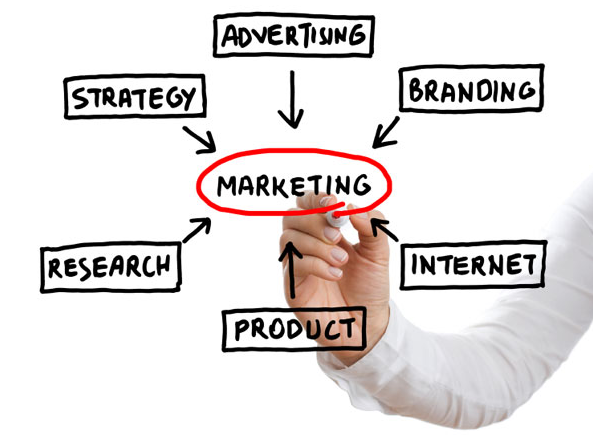- About us
- Services
- Projects
- Coaching
-
News
Your Leads - They Need ProperCare and FeedingJust because someone visits your website and downloads one of your e-books doesn’t mean they are ready to chat with you about hiring your company or buying your products … at least not yet. Actually, no one is really ready to have a personal conversation with anyone until the pain associated with their issue becomes acute. As marketers, you never know when that pain is going to be acute, so you have to continually nurture your leads with even more educational content. The real purpose for this nurturing is to help them feel progressively more comfortable with your firm. The more you help them with links, educational materials, videos, blogs and other relevant content, the more likely they are to hire your company.TIP: Since your prospects will never buy until their pain becomes acute, lead nurturing keeps your company in front of them, so when their pain does become acute, they pick you.This nurturing process can be automated and it’s recommended that this not only be automated but also planned out and personalized based on the lead’s target persona and profile. This ensures that everyone has the same remarkable experience, regardless of who they are and where they are in their own internal buying process. Regular email marketing campaigns are excellent examples of lead nurturing. Every month you publish an educational article along with a few other items you want your prospects and clients to know about and now everyone gets reminded of what you do, how you do it and why they should feel good about working with you.Another great way to nurture your leads is with automated personal emails. These Outlookstyle emails come for you or someone at your company. They are personalized and include links to additional educational content. They could be specific blog posts, additional whitepapers, upcoming webinars or special e-books available just for them. These automated emails are scheduled upfront to send at predefined intervals (say 3 days, 6 days and 9 days) after a significant event or interaction with your company. Of course, the timing can be adjusted at any time and customized for any situation. Along with these emails we also get intelligence on the performance of these campaigns. Who is opening them? When did they open them? Did they click through to any of the materials? This information is critical to helping you adjust the performance of the campaign and move these leads through the funnel toward becoming a new customer as quickly and as efficiently as possible.Read MoreTopics: Sales and Marketing, sales, sales leads, Leads, real estate, marketing, Roman Badnarchuk, lead generation, Sales Training, N5R Sales Training, marketing agency, Top condo sales trainers, 2014
Your Publication - Placing Content Drives New Prospects
Publishing is a concept that is familiar to everyone. Newspapers, magazines, TV stations and even websites publish stories in one form or another. I bet you didn’t know that, as a business, you have to be a publisher also. Why? Because your prospects are out there and with the traditional media infrastructure fading fast, you have to be smart enough to get your educational content in front of your target prospects.TIP : Don’t duplicate content. While it seems like you would be able to reuse a blog post from your site on an industry site, if Google finds out (and they will) it’s going to be a long time before you see the top of any search rankings.A great way to do that is by guest blogging. Popular blog sites have thousands of readers and even more people who have subscribed to the blog. By offering your opinion and sharing helpful tips and advice on a popular blog, you drive brand new prospects to your website. If they like what they see on your website and they get a remarkable experience (remember this from earlier in the book) they turn into leads. Another way to publish your content is to extend your existing relationship with trade publications, trade associations and industry groups. Every industry has associations and groups like this. While their magazines might be getting thinner and thinner, their online properties are growing fast. They are looking for smart, educational and creative content to share with their readers, members and visitors. If your company can provide that content, they are usually happy to give you access to their website. Now these perfectly targeted prospects see your content, click through, land on your website and turn into leads. When you think about it, it’s not much different than what you used to do. Instead of buying space and placing advertisements, now you offer educational content with links back to your website. It should cost a lot less and drive a lot more business for your company than traditional outbound marketing. Better yet, it’s perfectly aligned with how your prospects want to buy, bringing your company that much closer to getting the deal.Read MoreTopics: Sales and Marketing, sales, sales leads, Leads, real estate, marketing, Roman Badnarchuk, lead generation, Sales Training, N5R Sales Training, marketing agency, Top condo sales trainers, 2014
Your Social Media - Give Them Something To Talk AboutIf you think your prospects and customers aren’t on social media, think again. If you believe that your prospects aren’t searching for businesses just like yours on social media, think again. If you still feel strongly that prospective customers aren’t talking about your business on social media, think again. With 1 billion people on Facebook and 250 million people on LinkedIn and 200 million people on Twitter and 190 million people using Google+, you can be sure that your prospective clients are on social media looking for firms just like yours right now. Social media has never been more important to businesses like yours than it is today. In the past 12 months, clients have seen social media catch up to organic search as a major source for new visitors to their websites.TIP: If your content is remarkable people will share it and when you have people talking about your content you have more visitors to your website and more leads for your business.The key is not to create another profile page, but to create social sites that continue your inbound marketing approach by leveraging educational content. Social media is where people come to converse. Your company has the expertise to facilitate those conversations, to start those conversations and to feed those conversations with content. The more active you can be in those conversations, the more new visitors you will send to your website, the more your website will be found on search engines, the more leads you will generate for your business and the more new client opportunities will present themselves to your firm. It all fits together, perhaps even more perfectly than you think. When you blog, you need to share that blog on social media. Besides publishing that blog content to your corporate social media sites on Facebook, LinkedIn, Twitter and Google +, you also need make sure that all your people are sharing that content with every single one of their business contacts on LinkedIn.In addition to all that personal sharing, you should be pushing that blog content into the LinkedIn groups where your prospects are members. These groups have literally hundreds of thousands of members all looking for educational content to be shared in those LinkedIn groups. This isn’t always easy. Some of those groups are moderated and moderators typically have to publish that content. Most moderators do a decent job keeping up with it, but others are actually absentee moderators. The best way around moderators is to be an active contributor to these groups. If you are a top contributor, you can be sure your content will be distributed to all the members in a timely fashion. Finally, instead of just using a static corporate profile, make sure you reuse your offers from the Trio of Offers on your website. This entices visitors to your social media pages to click back to your website to download the educational materials. Now your social media pages are actively driving traffic to your site and turning that traffic into leads. These four small changes to the way you market your business could result in an increase in social media traffic to your website and an increase in leads over the next few days – not months.Read MoreTopics: Sales and Marketing, sales, sales leads, Leads, real estate, marketing, Roman Badnarchuk, lead generation, Sales Training, N5R Sales Training, marketing agency, Top condo sales trainers, 2014
Educate and They Will ComeIf you skipped all the other sections, this is the section you MUST READ. One of the major differences between traditional advertising and inbound marketing is its perspective on educating your prospects. The key to inbound marketing programs that generate leads for businesses like yours is the amount of educational content created by your company. The more content you create and add to your site, the more leads you generate for your business. Typically businesses like to talk about themselves – our people, our building, our experience, our products, our credentials or memberships. Like it or not, your prospective clients don’t care about that. They care about how you are going to help them. Think about your own buying behavior – do you care how long the car dealer has been around or how many years your sales rep has worked there? No, you just care about getting a fair deal on the car you want. You want to make a safe purchase decision. People hiring you or your company feel the same way.TIP: By giving your prospects creative, fresh, engaging and informative content on a regular basis, you establish your business as a trusted resource. Crack that nut and build that trust and the leads will follow.Educational content delivered on your website or as part of your business development process achieves the same goal. It helps your prospective clients feel like you want to help them. You want to educate them. You want to make them smarter. This experience goes a long way toward differentiating your company from other competitive businesses who don’t take this approach. Let’s face it: most people like to talk about themselves. But those who advise, guide and counsel are the ones that typically get the most referrals. It works the same way here. The more you help, the more leads you are going to get from inbound marketing. Typically, this educational content takes a variety of formats. E-books like this one, whitepapers, tip guides, research studies, surveys, webinars, live workshops, podcasts, how-to videos and infographics are all excellent examples of educational content that, when used properly, turns visitors into leads and moves prospects along the sales process without having to use the “hard sell.”
All educational material is not created equally. Some of your visitors are ready to hire you today – most are just starting to look around. Others might be in the middle of their process and are comparing your company to your three top competitors. The key is to have educational offers for everyone regardless of where they are in their personal decisionmaking process. The Trio of Offers ensures that you have educational content for all types of visitors. This trio includes the No Risk Offer, the Low Risk Offer and the Direct Business Offer.No Risk Offer – People at the top of the funnel, who are just starting their research are naturally suspicious. They don’t want to sign up for anything, nor do they want to give away any personal information until they start to trust you. But if they have a genuine interest and your content is appealing, they will engage. This educational content is typically a free report, whitepaper, tip guide, e-book or video that provides the visitor with information that helps them make an educated purchase decision or learn something new. In exchange for this information, they simply need to provide an email address. You could ask for additional information, but only the email address should be mandatory.Low Risk Offer – If your audience is satisfied and intrigued with the content they received in the No Risk Offer, many times they come back for the Low Risk Offer. If they are a bit more trusting, or further along in their purchase process, the Low Risk Offer provides them access to additional, more in-depth information. This offer requires a bit more engagement on the part of your audience. Those who engage with a Low Risk Offer are ready to move further down into the middle of the sales funnel. While you are going to ask more from them, you are going to provide them more in return. Low Risk Offers typically include free webinars/seminars, free assessments or reviews. Free trials or samples are also strong Low Risk Offers. Obviously, visitors need to provide additional contact information if they want to participate in or access these offers. This is typically their name, company name, website and even perhaps address and phone number. After all, if you are inviting them to an event and they are planning on attending, you might need to give them a call to confirm.Direct Business Offer – Whether or not they have taken advantage of your Low Risk and No Risk Offers, there will be visitors who have already decided that they want to start a more active sales conversation with your company. The Direct Business Offer gives them the opportunity to jump right to this step, or to initiate this step when they are comfortable with your company, products or services. These offers typically look like, “Contact Us Today!” or “Schedule A Call.” Of course, there are a number of ways to make these offers more creative and enticing. 12 For instance, we provide prospects with a 30-Minute Website Review and Website Grader Report. Giving your prospect something of value is important to convert more visitors into leads. As we mentioned in the first part of this e-book, the buyer is in control. The Trio Of Offers gives potential buyers all the information they need to get comfortable with your company on their own terms. This makes them feel safer and more likely to do business with you.Read MoreTopics: Sales and Marketing, sales, sales leads, Leads, real estate, marketing, Roman Badnarchuk, lead generation, Sales Training, N5R Sales Training, marketing agency, Top condo sales trainers, 2014
The Secrets to Generating Real ResultsFifty-five percent of businesses who blog report their blog as a major source of new business. 73% of businesses that blog more than three times a week report that their blog is a major source of new business. People are searching for businesses like yours right now. One of the best ways to get found on the web is to have a blog on your website, post regularly and gain authority with search engines as a respected source of information. Over the past two years, Google has changed its search algorithm to promote more natural content like blogging. In short, the more you blog, the more visitors you get to your website. Google is also rewarding websites that have fresh content added regularly. Every time you create a blog post, you add another indexed page to your website. The more pages you add, the higher you rise in the rankings. Blogging provides one additional benefit to an inbound marketing program. It’s sharable content.Today, more people will likely find your site from social media than from a searchengine. This means you need to share your voice, opinion, position and blog on social media. Blogging regularly is a great way to consistently share blog posts via Facebook, LinkedIn, Twitter and other social sites. The more you post, the more people connect with you, follow you, like you and view your messages. The more people you are connected with, the wider your reach and the more opportunities to turn that reach into new business. Your blog quickly becomes some of your most popular pages. On our site, 30% of our most popular pages are blog pages. Your prospects enjoy reading blogs because they are educational, contain stories and have a conversational tone to them.Finally, there are a few best practices that need to be considered when blogging for your business.• Every blog post must use a keyword from your prioritized and targeted keyword list in the title and in the first line. Do your best to get that keyword into your post two or three more times. Don’t do “keyword stuff” and don’t write for search, always write for your clients first and search second.TIP: The more you blog, the wider your reach. The wider your reach, the more people visit your website. The more visits you get, the more prospects convert into leads. The more leads … well, you get the idea.• Every post must have a graphic CTA (call-to-action) button. • Every post must have an image that is tagged with one of your keywords. • Every post must have meta tags and a meta description that uses the related keyword or keywords. • Make sure your post is between 600 and 800 words. • Make sure your post is assigned to an individual so that you are able to build up authority over time. • Every post must have social sharing icons that allow readers to easily share it on Facebook, LinkedIn, Twitter, Google+ and email it along to a friend. • Make sure that the keywords in your post are linked back to relevant pages on your site. Try to use other links to other sites so your blog posts represents a variety of opinions besides just yours.Follow these simple instructions and your blog will quickly lead to an increase in overall website visitors to your site and, eventually, more leads for your business.Read MoreTopics: Sales and Marketing, sales, sales leads, Leads, real estate, marketing, Roman Badnarchuk, lead generation, Sales Training, N5R Sales Training, marketing agency, Top condo sales trainers, 2014
Google reports that nine out of 10 people visit your website before they reach out to your company in ANY way. Microsoft Research reports that people spend 10 seconds on a website before they hit the back button. This means that your company is already getting prospects to visit your website but, in most cases, those prospects are leaving quickly to check out your competitor’s site. The good news is that an inbound marketing website provides many more opportunities to grab someone’s attention and turn them from an anonymous visitor and into a lead. The key is to create a website experience that delivers powerful messaging to the visitor, enticing them to stick around and get to know your company better. They have to feel as if you want to educate them. The more your website helps, the more leads you will get from your firm’s website.TIP : Your website has to tell a story about how your prospects are going to see real value by working with you and you have to do it in 10 seconds.Today 60% of people report viewing websites on their smartphone or tablet. This means your site has to be responsive (work on all devices seamlessly). Your site should adjust based on the device a visitor is using. The experience shouldn’t be degraded at all and, most importantly, the educational content should be deliverable regardless of device. This is a major issue with most sites over 12 months old. More and more people will be visiting your site from a device other than a PC. Make sure your site works right, every time.Your website is going to need a little planning, too. What are the keywords you want your website ranked for? What keywords are your targeted prospects searching for online? You have to know the answers to those questions before you start redoing your website. You should consider dedicated pages on your site that highlight keywords. You need to plan for landing pages and conversion pages that make it easy for visitors to download educational content (more on that later) and you need to make sure that you have the proper tags, descriptions and URL naming conventions to ensure your site ranks on all the major search engines. Most businesses make two major mistakes when launching a website. First, they talk all about themselves and spend very little time helping the prospects and new visitors see exactly what you are going to do for them. Make sure your site passes the red/blue test. Go through your site and circle, in red, all the times the site mentions your company name or words like “we,” “us” and “our.” Then go through and circle, in blue, all the times your site mentions clients, or uses the words “you” or “your.” You should have 80% blue and 20% red. This simple exercise ensures your site is about your prospects and not about you. Next, make sure that your site has messages that connect emotionally with your visitors. People make purchase decisions emotionally and then rationalize their decisions. If your site doesn’t connect with them in the first ten seconds, you have a good chance of missing out on opportunities to deliver leads for your business. Remember, as human beings we don’t remember features and benefits but stories and experiences are memorable and sharable all across our individual networks and our social networks. Your website has to tell a story and deliver a remarkable experience if you want to use it to generate a significant stream of leads for your business.Read MoreTopics: Sales and Marketing, sales, sales leads, Leads, real estate, marketing, Roman Badnarchuk, lead generation, Sales Training, N5R Sales Training, marketing agency, Top condo sales trainers, 2014
The Secrets to Generating Real ResultsBuyer behavior has changed forever. That means the time has come for companies everywhere to either get on board or get out of the way because there’s no going back to the old way of doing business.To truly understand this new shift in buyer behavior, you need to take a look at how and why it came about: In the beginning, before the invention of mass media, buyers everywhere relied on salespeople and word of mouth to inform their purchase decisions. Then mass media came along and advertising was created to take advantage of the reach associated with mass media.All of a sudden, you could reach millions of people with a single advertisement. This helped spread sales and marketing messages far and wide. Reach and frequency was the name of the game. Tell as many people as possible, as many times as possible about your product or service and hopefully, when they needed it, they would remember your message and choose to purchase from you.In the early days of the internet, marketing professionals adopted and adapted advertising’s interruptive best practices and broadcast-style approach. That was a mistake based on an old, outdated way of thinking. The fact of the matter was, just like with every other mass media invention (print, radio, television) that preceded it, the internet permanently changed the way people interact and exchange information.Today’s buyers have access to more information from more sources than ever before. They ask questions, get answers, read reviews, do comparisons and start conversations with people they’ve never met; all on the web, all on their own terms and all on their own time schedule. Look at the buying patterns of your own prospects and clients.Chances are, they are researching the purchase of your services or merchandise via the internet long before they ever step into your store or give you a call. Today’s buyers are looking for informative educational content followed up by a consultative, guided sales process.As a result, the traditional outbound advertising and marketing techniques that worked so well over the past century just don’t perform like they used to. Faced with that reality, businesses have two options: throw increasingly large sums of money at the problem or find an alternative approach. Inbound marketing techniques are perfectly aligned with this new buyer behavior and they do a much better job delivering a remarkable purchase experience that helps to differentiate and ingratiate prospects with your business.Read MoreTopics: Sales and Marketing, sales, sales leads, Leads, real estate, marketing, Roman Badnarchuk, lead generation, Sales Training, N5R Sales Training, marketing agency, Top condo sales trainers, 2014
Your Marketing Plan, StrategyBefore TacticsOne of the key mistakes made by most business owners, CEOs or marketing executives is hiring a firm or firms that specialize in a specific tactic (website design, search engine optimization, PR or social media) without having a well-thought-out overall marketing strategy and plan for the firm. Even if you hire an inbound marketing firm, starting tactics without a solid plan in place is a recipe for disappointing results. Before you jump in and start working on the marketing tactics for your company, you MUST create an overall marketing strategy and marketing plan that addresses some key areas.Buyer Personas – Who do you want to attract with your marketing? Who do you want to repel? You might want to ONLY work with large corporations and you might NOT want to work with individuals. This business strategy has to be reflected in your marketing. Creating target personas (detailed bios) for the people you want to attract to your firm is critical.TIP #1: Executing inbound marketing tactics without a solid marketing strategy and plan is one of the main reasons inbound marketing programs fail to deliver significant improvements in lead generation.Voice & Tone – What do you need to say to those people to get them interested in your firm? Knowing how to connect and engage with your target personas is critical. If you skip this step, you run the risk of spending money on marketing that never attracts a single prospective client for your firm. You need to create messages that emotionally connect with your target clients.Differentiation – What do you do that’s different than all the other companies in your market? What makes you stand out? What makes you remarkable? Yes, it’s safe to look like the rest of your competition but if you want to attract new leads for your business – you have to look, sound and act differently than your competition.Tactic Mapping – What tactics do you need to implement to get to your goals? You need to have a broad overview of everything you need to do, when you need to do it so that you meet your new business acquisition goals. You need to have editorial calendars, schedules and detailed plans for each of the multiple tactics in an inbound marketing program.Budget – How much investment is required? A marketing plan highlights a budget for the year and directly correlates that budget to expected results. Without this, you are just flying blind.A little more on personas – One of the most important parts of your marketing strategy and plan is the creation of target market personas. Why? If you don’t intimately know who you are marketing to, you will never achieve your lead goals. Personas are more than just demographics. They include as much intelligence on your target market as possible. For instance, what blogs do they read? What email newsletters do they subscribe to? What trade associations or industry magazines do they read? What conferences or trade shows do they attend? What LinkedIn groups are they members of? Who do they follow on Twitter? Knowing these details about your prospects influences almost all of the marketing tactics included in your inbound marketing plan. It impacts the creation of your website, your social media sites, your blogging, email marketing and content creation effort – the more detailed your personas, the better your results.TIP #2: If you’re not keeping score, you’re just practicing. Establish the number of leads your business needs to meet its new revenue objectives and then track performance against those lead goals daily, weekly and monthly.A little more on goal setting – What gets measured, get’s done. Marketing has historically suffered from ambiguous goals, like getting your name out there or building your brand. Today, marketing has only one goal: generate leads for your business. But how many leads and in what time frame? Your marketing must be aligned with your business goals. Start with your high level goals. What are your revenue objectives for the year? If you need to add $1 million in incremental revenue to the top line and each new client is worth $10,000, then you need 100 new customers to hit your goals. If you have a 20% close rate on all sales opportunities, now you need 500 sales opportunities. If only 50% of the leads are actual sales opportunities, then you need 1,000 leads over the course of the year. If you don’t know these KPIs (key performance indicators) for your business, then getting to know them should be your first priority. Once you know how many leads you need, now you need to figure out how much website traffic is required to generate 1,000 leads. This is where inbound marketing shines. Each inbound marketing tactic in your strategic marketing plan contributes to website traffic, and overall lead generation. Welcome to marketing in 2013. I hope you see how important marketing strategy is to the performance of an inbound marketing program. Without it, you are virtually driving your car blindfolded.Read MoreTopics: Sales and Marketing, sales, sales leads, Leads, real estate, marketing, Roman Badnarchuk, lead generation, Sales Training, N5R Sales Training, marketing agency, Top condo sales trainers, 2014
Yong Kim, The CEO of Wonolo elaborates on the unspoken but known magic formula of success for students pursuing a business career. I don’t blame them as I fell into this same path in my early career. At the time, I recall the utter need and desperation to follow this algorithm, as I believed this was the only path to success.Yet, if I could do it all over again, I would take a completely different approach. What would I do now? I would get a sales job. In fact, it does not matter what type of sales - insurance, cars, cell phones, cosmetics… I would take any opportunity that would teach me how to prospect, qualify, pitch, close and manage customers. And here is why.
The most important skill in business is sales
If I look at some of the most successful leaders in business, one undeniable common thread they all have is that they are incredibly gifted at selling. They know how to create and share the story with their customers in a way that is difficult to resist. Customers will say, “Wow, I really believe in this person. I want in.”
I am not just talking about selling a product or a service, but selling a vision. Ultimately, you have to get people to buy into you, follow you, and choose to support you. So, you have to sell not only to external customers, but to investors, your internal teams and new hires once you have your own team to lead. Building a strong team culture, with enthusiastic and excited employees requires selling your vision of why the work is important to them and to your customers. So, it’s critical to perfect selling, in all areas.
The most difficult skill to master in business is sales
Sales is not just about closing deals. It involves careful strategy around how to identify and prospect target customers. Then, once you have successfully reached out to key customers and have gotten their attention, it requires thorough preparation of your pitch. What are your customers’ unique pain points and how can you help offer solutions? This courtship may take a few days to weeks, if lucky, but often times, it can take up to many years. After successfully convincing them to trust you and your product/service, your job doesn’t end there. The goal is to maintain a strong relationship, and keep your customers happy for many years to come.
Each part of the sales process presents unique challenges and requires a multitude of skill sets to master. Along the way, you learn how to be mentally strong; being diligent, persistent and patient are core traits of being excellent at sales. So, the earlier you start, the more time you have to learn and master.
The most transferable skill in business is sales
Various researches have estimated that people switch jobs about 7 times in their career. Though the validity of this number has often been argued, one thing is clear; no one will have the same job, same role forever. Case in point: people switch jobs at some point even within the same company. Accordingly, roles and responsibilities associated with new jobs change, requiring a different set of capabilities. Regardless, there is one skill set that is required in any job - effectively communicating with both internal and external members, collaborating across cross functional teams and delivering results. These are fundamental skills naturally trained and developed in sales. In fact, if you look at the background of top executives at successful organizations, many of them started their career in sales and continued to prove their leadership in different roles.
I made my first cold call when I was in my mid thirties and only after I started my own startup. Many long months went by without a single sale, even after making hundreds of cold calls and sending out thousands of emails. I felt hopeless. Even with my MBA degree, prior experience in investment banking and consulting, I could not get a single new customer. It was a very painful truth to swallow - I did not know and had never learned how to sell.
Fast forward several years (and I have gotten better at it), I am still learning. I look back at the many years of missed opportunity to learn the art of selling and wish that I could have started the process much earlier in my career. It’s been some of my most challenging times, but sales has taught me so many things about business in a holistic way. Study your prospective clients, build relationships for the long term, nurture relationships once formed, never give up, etc.
Most importantly, it helped me become a better listener and more empathetic to my customers’ needs. Truly, having to work so hard to get one customer and seeing that that person has made a conscious decision to say yes, to give you a chance, and to choose to spend their resources on you, makes me that much more passionate to serve my customer.
So, if you are debating between Goldman Sachs or McKinsey, think again and get a sales job.
Read MoreTopics: Sales and Marketing, sales, sales leads, Leads, real estate, marketing, Roman Badnarchuk, lead generation, Sales Training, N5R Sales Training, marketing agency, Top condo sales trainers, 2014
Measuring PerformanceYou might be tempted to sit back and relax once your campaign has launched. But in order to understand how your campaign is performing (and how you could potentially improve it) you should monitor key campaign metrics in an analytics tool like Google Analytics.
So, what metrics should you be paying attention to?
Here are the basics:
• Views: how many people have checked out your landing page
• Downloads/registrations: how many people lled out your landing page form inorder to download content/register for an event
• New contacts: how many new contacts has the campaign added to your database
• Conversion rate (downloads/registrations): % of landing page visitors who end up downloading content/registering for an event
• Conversion rate (new contacts): % of landing page visitors who download content/ register for an event and become new contacts as a result
• Ensure that your landing page is mobile-optimized (learn more).
• Use target keyword(s) in the page title.
• Keep the URL structure clean. For example: o er.yourwebsite.com/free-marketing-guide = good
o er.yourwebsite.com/id=4673007niner/free-marketing-guide-07-17-15 = bad
• Write a compelling meta description. (Note: this won’t a ect rankings, but it can help encourage searchers to click on your website’s result, so make it count!)
In order to compare the performance of two or more campaigns, establish and stick to a speci c time duration that you can use for all of your measurements.
For example, if one campaign launched last January and another launched last March, comparing their total views, total downloads, etc. would be misleading: the rst one’s had more time to perform. To account for this, simply decide on a timeframe (for example, from a campaign’s launch date to 2 weeks after launch) and use that for every metric you calculate.
Sound a bit complicated? At HubSpot, we’re able to keep tabs on all of our campaign metrics with the help of Google Sheets. Here’s a mock-up of what one of our quarterly campaign performance spreadsheets might look like:
Need to present your ndings to a coworker or third party? Select your data and use Google’s Chart Editor (Edit > Insert > Chart) to create a chart, graph, or other visualization.
Once a campaign has launched and you’ve collected data on its performance, it’ll be time to run a “post-mortem’ meeting with your coworkers and collaborators. You can do this in-person, via Google Hangouts or Gmail, or even in a Google Doc that everyone can update or comment on.
Here are some of the questions you should answer and explore:
• Which sources (organic, paid, social?) drove the most tra c to your campaign’s landing page?
• Which sources drove the most-quali ed (i.e., most likely to convert) tra c?
• Which sources drove the least amount of/least-quali ed tra c?
• If you were able to launch the campaign again, what would you do di erently? What would you do the same?
 Read More
Read MoreTopics: Sales and Marketing, sales, sales leads, Leads, real estate, marketing, Roman Badnarchuk, lead generation, Sales Training, N5R Sales Training, marketing agency, Top condo sales trainers, 2014
Your Email to Subscribe
Archives
- February 2016 (56)
- August 2016 (43)
- November 2014 (36)
- January 2016 (33)
- September 2016 (31)
- October 2016 (31)
- December 2011 (30)
- November 2012 (29)
- December 2014 (26)
- August 2015 (25)
- July 2013 (24)
- September 2015 (24)
- May 2011 (20)
- November 2011 (20)
- June 2016 (20)
- January 2011 (19)
- September 2011 (19)
- June 2012 (19)
- October 2015 (19)
- March 2013 (18)
- April 2013 (18)
- January 2013 (17)
- July 2016 (17)
- January 2012 (16)
- February 2012 (15)
- July 2015 (14)
- November 2016 (14)
- November 2010 (13)
- December 2010 (13)
- June 2011 (13)
- October 2011 (12)
- December 2012 (12)
- February 2013 (12)
- January 2015 (12)
- January 2017 (12)
- May 2013 (11)
- August 2011 (10)
- March 2012 (10)
- June 2013 (10)
- December 2016 (10)
- October 2014 (9)
- April 2011 (8)
- May 2012 (8)
- September 2013 (8)
- July 2012 (7)
- December 2013 (7)
- May 2016 (7)
- February 2011 (5)
- July 2011 (5)
- April 2015 (5)
- March 2016 (5)
- November 2017 (5)
- May 2019 (5)
- July 2010 (4)
- March 2011 (4)
- August 2013 (4)
- February 2015 (4)
- August 2010 (3)
- September 2010 (3)
- August 2012 (3)
- November 2013 (3)
- February 2014 (3)
- May 2015 (3)
- October 2010 (2)
- January 2014 (2)
- July 2014 (2)
- March 2015 (2)
- December 2017 (2)
- April 2012 (1)
- May 2014 (1)
- November 2015 (1)
- March 2017 (1)
- July 2017 (1)
- February 2018 (1)
- October 2021 (1)










